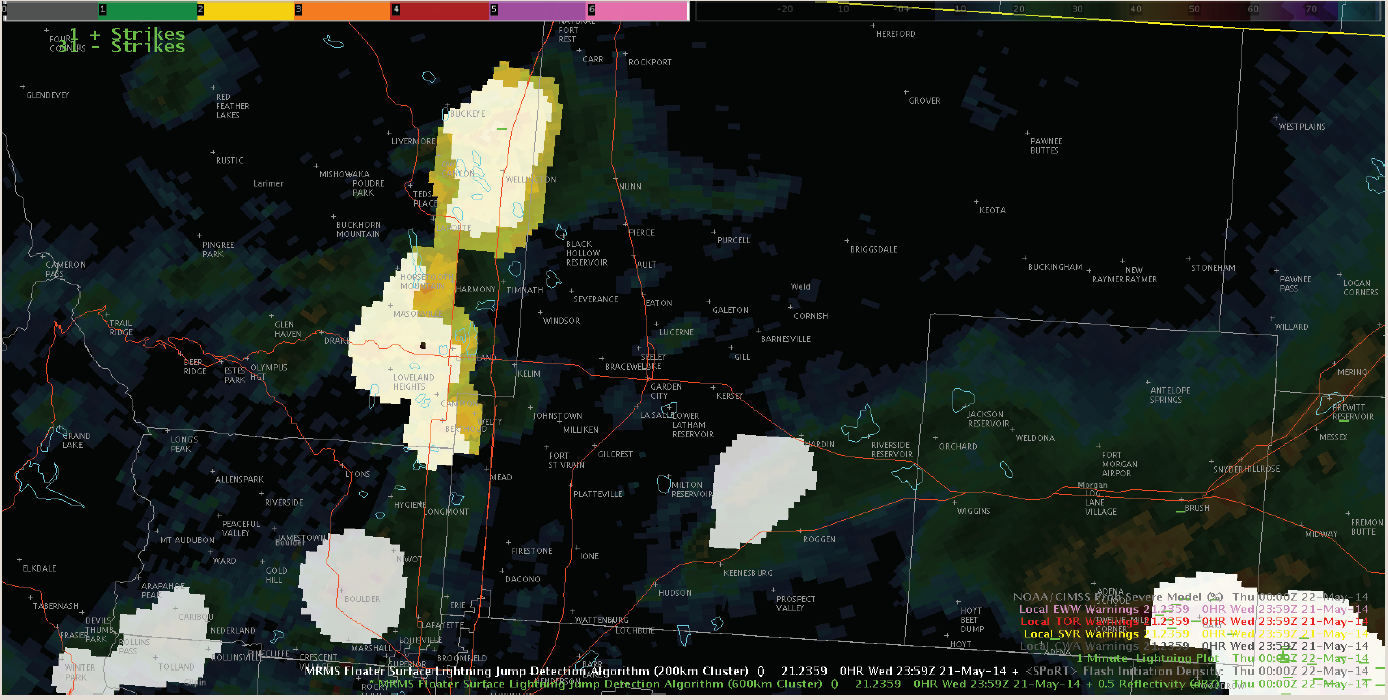Lightning Jump - Warning Decision Training Division (WDTD)
Navigation Links
Products Guide
Lightning Jump
Short Description
Lightning Jump (current storm flash rate greater than two standard deviations above the previous 10-minute period) product is derived using Earth Network's Total Lightning data, determined only for storms and periods containing a flash rate of at least 10 flashes per minute.
Subproducts
Lightning Jump Grid
Lightning Jump Grid Max 5 Min
Primary Users
NWS: WFO, CWSU, AWC, SPC
FAA: Tower, TRACON, ARTCC, ATCSCC, AFSS
Other: EM
Input Sources
Earth Network's Total Lightning Network
Resolution
Spatial Resolution: 0.01° Latitude (~1.11 km) x 0.01° Longitude (~1.01 km at 25°N and 0.73 km at 49°N)
Temporal Resolution: 2 minutes
Product Creation
Technical Details
Latest Update: MRMS Version 12




